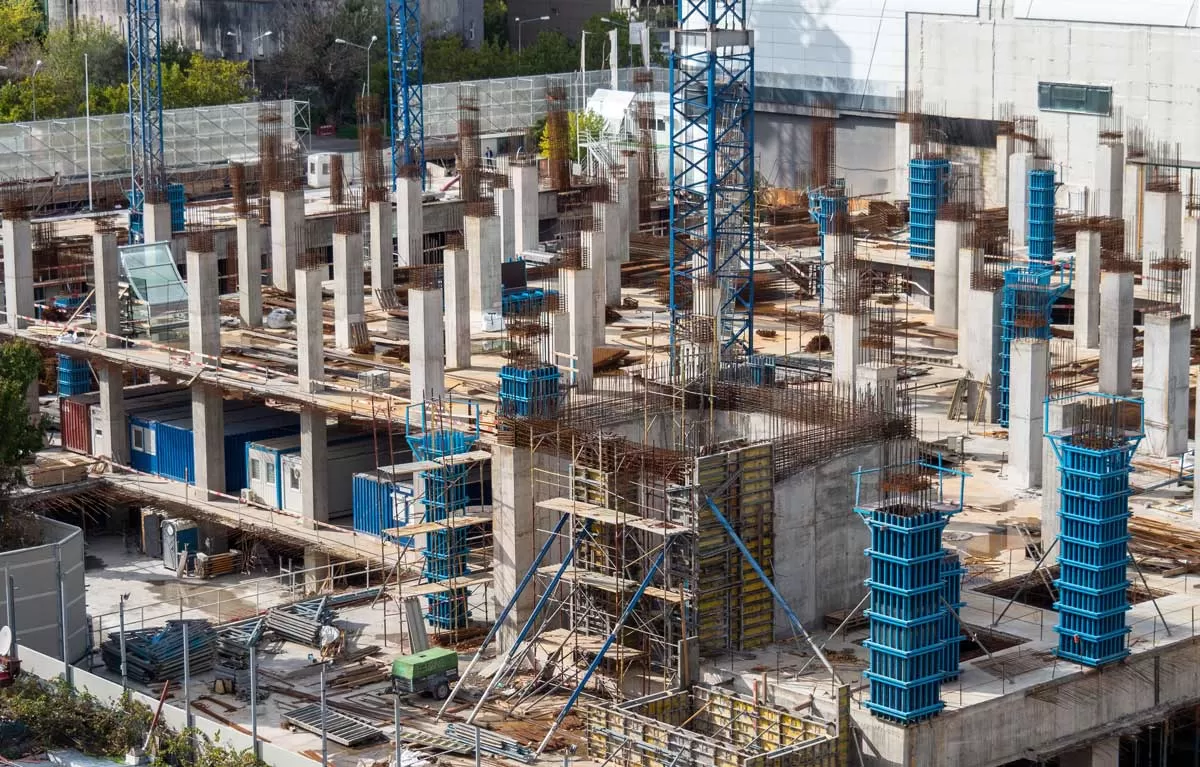It is almost a decade that the Indian real estate industry has been going through tough times. With shorter stints of positive times, the industry has been braving policy initiatives and regulatory reforms in the past. Even if we take the current scenario, increasing levels of unsold inventory, rising debt levels of leading realty firms, and few bankruptcy cases – it only indicates the sector’s troubled times. All in all, the subdued economic situation with GDP coming down to 5 percent has adversely affected the demand cycle in real estate.
With its scope comprising of sub-segments such as housing, retail, commercial and hospitality, the realty sector has its own significance in India’s growth trajectory. Further, with the direct co-relation with Aam Aadmi / Common man, it makes it furthermore an important sector for the Indian government.
Since the NDA-I regime, much has been tried and implemented in the Indian real estate sector by way of regulations and reforms. Most of it was inclined towards the buyers and not the real estate players, further making the things complicated for realty developers. While the government has introduced various policy initiatives such as RERA, GST, and IBC to streamline the business and has infused Rs 250 billion through alternate investment funds for last-mile funding of affordable homes, the government needs to safeguard the sector, which accounts for 8 percent of the GDP. With this, the industry expects some relief in the Union Budget 2020.
Avneesh Sood, Director, Eros Group, agrees, “Policies should be specifically focused on generating mass demand and employment because a slowing economy underscores the importance of real estate as an option to boost GDP rate. Also, to bring back growth in the real estate sector, which is so vital to any developing economy, it is significant for the government to impart industry status to the sector, which would allow developers to cut capital costs and pass on the profits to consumers”.
The industry pleads the government to take this opportunity to revive the real estate industry by boosting demand. CW recommends that the initiatives should be in line with the objective of the government’s “Housing for All by 2022”.
The industry clearly suggests two expectations:
• 80IBA scheme time limit should be increased.
• ECB should be allowed for affordable housing and commercial office spaces.
Satish Magar, President, CREDAI (National), commented that the following portion of Section 80IBA should be deleted. “Where the approval in respect of a housing project is obtained more than once, the project shall be deemed to have been approved on the date on which the building plan of such housing was first approved by the competent authority.” He added, “There should be exceptions to this clause to accommodate cases where the construction work has not started after sanction of plan and the developer opts for re-sanction to take up affordable housing.”
According to CREDAI (National), the benefit under Section 80IBA should be extended to all affordable housing projects as long as the size of the residential units satisfy the limits on carpet area of the units at 30 sq m, where the project is located within Chennai, Delhi, Kolkata or Mumbai, or 60 sq m, where the project is located in any other place.
Industry players suggest the following steps in order to help revive the demand in the real estate sector. The initiatives will not only help the home-buyers but developers as well, making it a win-win situation.
The first measure is required on the Income Tax front. Realty players are seeking deduction of interest on home loans. It suggests that an individual is allowed to avail of deduction of interest on loan for acquisition of a house. However, the deduction is allowed only on loans sanctioned between April 1, 2016, and March 31, 2017. Add to that the factor that the amount should be not exceed Rs 50,000, it hardly provides any help.
• The timeline for the loan may be extended to March 31, 2022, in line with Housing for All by 2022.
• In case of individuals, 100 per cent interest on home loan should be allowed as deduction for the first home. Hundred per cent interest on home loans to be allowed as deduction for the second and third home, provided that, except for the self-occupied home, others are rented for a period of nine months during the year.
• The measure is being suggested to boost rental housing, and tax-break to be given to rental income earned by individuals.
As regards the expectations, Mayur Shah, Managing Director, Marathon Group, says, “Section 43 CA of Income Tax Act is a barrier to natural price correction and the stalled project has a cascading effect on home buyers, banks and other stakeholders and needs to be removed or amended to exempt primary sales or at least allow sale at 30 per cent below the circle rate.” He further added, “The benefit of ITC should be restored to real estate GST by charging GST at 12 per cent with allowance for land cost at 33 per cent on par with the current rate of works contract services for government projects.”
Section 43A – Explained
Deletion or amendment of Sec 43A relating to the value of property for the purpose of stamp duty where the consideration received or accruing as a result of the transfer by an assessee of an asset (other than a capital asset), being land or building or both, is less than the value adopted or assessed or assessable by any authority of a state government for the purpose of payment of stamp duty in respect of such transfer, the value so adopted or assessed or assessable shall, for the purposes of computing profits and gains from transfer of such asset, be deemed to be the full value of consideration received or accruing as a result of such transfer.” Effectively Sec43CA states that in case the sale rate of any property is below the circle rate of the state government for the levy of stamp duty, the rate as envisaged with the state government will be the full value of the transaction and the stamp duty will be assessed at that rate. Expectation: This section is a barrier to natural price correction and stalled projects as it has an impact on the home buyers, banks and other stakeholders and needs to be scrapped or amended to exempt primary sales or at least allow sales 30 per cent below the circle rate.
Here Pankaj Pal, President-Business Development & Strategy, AIPL, says, “Given that the sector is looking forward to the upcoming Budget 2020-21 and expects immediate aid in terms of easing the liquidity crisis, incentivise rental housing, lower home loan interest rates and also rationalise personal and other forms of taxation.”
Further taking into account the output GST being paid on such rentals on commercial leases, the restriction from input tax credit (ITC) eligibility under section 17(5) (c) and 17(5)(d) of the CGST Act, be removed. On this issue, Pankaj Pal added, “While the GST rate on under-construction properties was reduced to 5 per cent in 2019, ITC benefits should be included in GST for under-construction homes. Providing ITC benefits will be a great incentive to lower property prices and thus, make under-construction homes attractive again”.
Apart from this, many developers are also seeking the one-time restructuring scheme for real estate projects. Mayur Shah, says, “Liquidity shortage continues to cause distress in real estate. Hence, a one-time restructuring scheme with moratorium on principal and interest of two years is immediately needed.”
Suggestions is also being given that housing loans up to Rs 10 million may be counted towards the priority sector and interest rates to be below 7 per cent effectively. Pankaj adds, “Special status should be granted to HFCs to bring them at par with the banking sector for their sustained viability in the market to invest in the sector. They should be allowed to raise funds so that they can offer incentives in the form of lower interest rate to the borrowers”.
Realty players are also looking forward to the quick implementation of Alternate Investment Fund (AIF). In this scenario, CW recommends that allotted funds need to be utilised to full potential without delay. And lastly, completion of stalled projects will improve home-buyer sentiment and boost demand.
Apart from these expectations, exclusion of taxes on empty property, reducing circle rates section from Income Tax Act, increasing the bound of interest deduction compensated on a home loan, safeguarding tax rationalisation on REITs and take down costs of land acquisition are some of the actions that will positively impact the sector.
A few other suggestions are being listed below:
Affordable housing benefits are currently capped to houses below Rs 45 lakh. Industry players feel, if that limit is revised upwards, it will benefit listed players and demand in general.
SEZ developers and occupiers enjoy direct tax benefits if they occupy IT-SEZ Park before March 31, 2020 – if the sunset is extended, that will keep demand for commercial spaces healthy.
The government may make reference to relaxation in NPA recognition norms (followed up by details from RBI) to resolve stalled real estate projects due to funding crunch. The sector could attract more funds with these measures (assuming some reversal of risk aversion).
Tweak tax concessions like raising tax deduction on rental income to 50 per cent from the present 30 per cent to give a boost to rental housing.

















